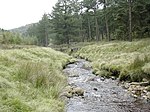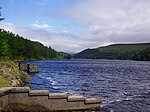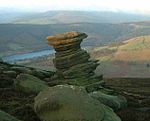Howden Edge
Hills and edges of South YorkshireSouth Yorkshire geography stubs

Howden Edge (grid reference SK187943) is a peak in the north-east of the Upper Derwent Valley area of the Peak District National Park in England. At 545 m (1,788 ft), it is the second-highest marked point within South Yorkshire, after Margery Hill 546 m (1,791 ft). The highest point itself being High Stones at 548 m (1,798 ft) which is only shown on 1:25,000 scale maps and larger. It is north-east of Howden Reservoir and north of Abbey Brook.
Excerpt from the Wikipedia article Howden Edge (License: CC BY-SA 3.0, Authors, Images).Howden Edge
Howden Edge, Sheffield Bradfield
Geographical coordinates (GPS) Address Nearby Places Show on map
Geographical coordinates (GPS)
| Latitude | Longitude |
|---|---|
| N 53.44514 ° | E -1.71993 ° |
Address
Howden Edge
Howden Edge
S33 0BB Sheffield, Bradfield
England, United Kingdom
Open on Google Maps











